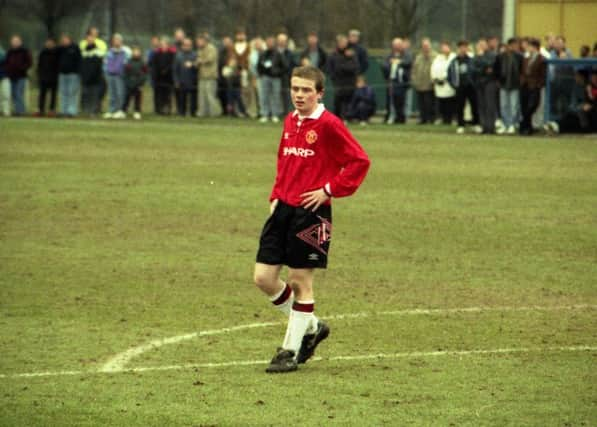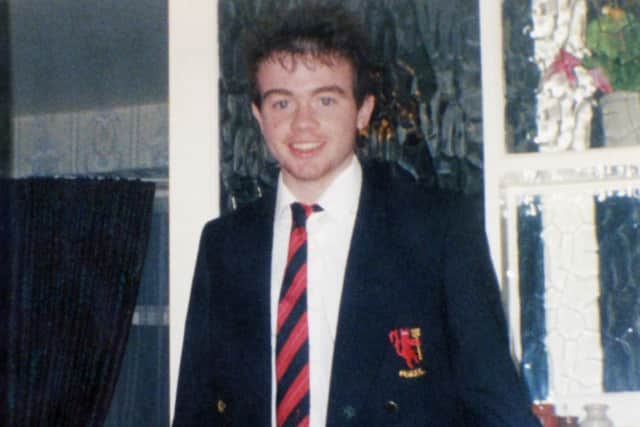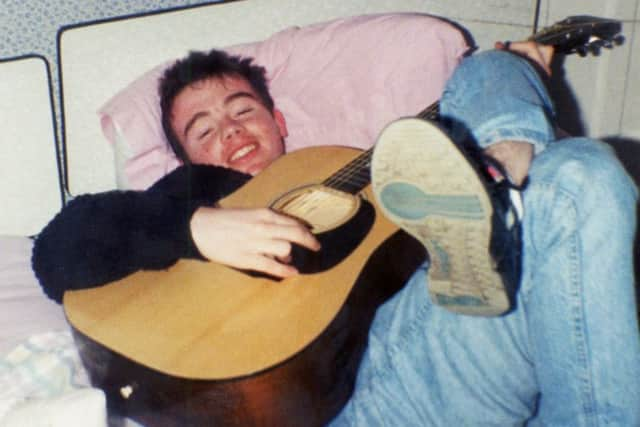'˜Bob Dylan in the No 7 shirt' - The bohemian footballing phenomenon that the world forgot


But then Adrian Doherty wasn’t your average footballer. Blessed with extraordinary talent, he played alongside Ryan Giggs and was feted as ‘the next George Best’ before injury cruelly robbed him of the chance to be the superstar everyone who saw him play felt he was destined to become.
Yet most people haven’t heard of a player who one team-mate described as “like Bob Dylan in a No 7 shirt”. It’s something Oliver Kay hopes to rectify through his excellent new book Forever Young – The Story of Adrian Doherty: Football’s Lost Genius.
Advertisement
Hide AdAdvertisement
Hide AdIt charts the rise of a footballing prodigy who was tipped to be a trailblazer for the new generation of youngsters that emerged at Manchester United during the early 1990s, through to his peripatetic post-football life and untimely death at the age of just 26.


Kay, chief football correspondent with The Times, stumbled across his story by chance five years ago. “I was doing some research for a piece on Ryan Giggs and talking to some ex-players and Adrian Doherty’s name cropped up. I’d vaguely heard the name 20 years earlier but I didn’t know what had happened to him.”
His curiosity suitably piqued he went online to see what information he could glean but found few details. He tracked down Doherty’s family and after speaking to them realised there was a fascinating, and hitherto untold, story waiting to be told. “His personality came through. This was someone who went busking and wrote songs and poetry. Some of the stuff he wrote was really good, especially for a 16 year-old footballer.”
Kay, who lives with his family in Ripponden, West Yorkshire, carried out more than a hundred interviews, speaking to friends and relatives as well as some of the biggest names in the sport, including Giggs, Sir Alex Ferguson and Gary Neville, to create and intimate portrait of an enigmatic character and the unlikeliest of footballers.
Advertisement
Hide AdAdvertisement
Hide AdThe story begins in Northern Ireland in the small town of Strabane in County Tyrone and a family immersed in football. Adrian’s father, Jimmy, had played at senior level for Derry City Football Club and he followed in his footsteps.


Adrian was talent spotted and after a trial for Manchester United in the late 80s Jimmy received a phone call from Sir Alex Ferguson. The United boss told him that his son “ticked all the boxes” and had no apparent weaknesses to work on.
“His parents were reluctant to let him go over to begin with,” says Kay. “He came from a small family and at 16 he found himself in Manchester where he didn’t know anyone and he found it quite daunting.”
Doherty quickly became homesick and returned to Northern Ireland and it was only after Ferguson personally intervened that he went back to Old Trafford. “He persuaded him to go back and after that for the next 12 months or so he was phenomenal,” says Kay. “He was on the verge of the first team squad at the age of 16 or 17, which wasn’t normal. He was about six months older than Giggs and at that stage he was the one closer to making his first team debut.”
Advertisement
Hide AdAdvertisement
Hide AdThey played together in the same youth side – Giggs marauding down the left and Doherty terrorising defenders on the right. “Ryan Giggs told me that when they were playing together at 18 Adrian was more consistent and that he sometimes got a rollicking from Alex Ferguson but Adrian never did.”


Those who watched him play talk about his ability to glide past opposing players almost at will and, despite his slight frame, his bravery in the face of some pretty hefty challenges from defenders.
Although he was a supremely gifted footballer Kay says he lacked the ego we’ve perhaps come to associate with modern day players. “He was offered a five-year contract at the end of his first year as an apprentice, which was unheard of. It took his salary up to £200 a week but he turned it down because he said he wasn’t sure he’d still be playing in five years time, so he asked if he could sign for one year instead.”
In the end a compromise was reached and he signed a three-year deal. “On the pitch he was hyper-competitive and courageous but away from football he’d rather go busking on Saturday afternoons than go and watch a game. Strange as it might seem, I think he got more joy from writing poetry and performing at open mic nights than he did from the daily grind of training,” says Kay. “He used to ride a rusty old bike to training. He wasn’t your run-of-the-mill footballer and that’s what I found so appealing about him.”
Advertisement
Hide AdAdvertisement
Hide AdHowever, Doherty’s world was turned upside down in February 1991 after he suffered a knee injury during an A-team match Carlisle United. The injury wasn’t initially thought to be too serious and it was only five weeks later went it wasn’t healing and he was sent for a scan that the severity of the ligament damage was picked up.


He eventually recovered but wasn’t the same player as before and only managed a handful more matches before he was released in 1993. He was just 20 years old.
Many people would have struggled to come to terms with having their dreams so cruelly shattered, but Kay says Doherty simply accepted it and got on with his life. He moved to Preston getting a job in a chocolate factory before heading to Galway a couple of years later where he worked for a time as a hotel porter. “He just wanted enough money for a roof over his head and to go to the open mic nights. He didn’t talk much about his days as a footballer, it wasn’t that he didn’t want to talk about it he just didn’t want to be defined as a failed football player.”
In 2000, Doherty sought a change of scenery and got a job with a furniture business in The Hague. But just a week after arriving in Holland he was pulled out of a canal, having fallen in by accident, and spent several weeks in a coma before passing away on June 9, just a day before his 27th birthday.
Advertisement
Hide AdAdvertisement
Hide AdDoherty was meant to be the first trailblazer for that golden generation of footballers but his name had been all but forgotten until now. It’s perhaps easy to view his life as a tragedy, but Kay doesn’t see it that way. “It’s not just a story about football, it’s about how you respond to adversity and having the courage to be true to yourself.
“The friends of his I spoke to said he wouldn’t have changed if he’d made it to the top. He was more interested in Bob Dylan than George Best and I love that idea of a bohemian football superstar.”
Forever Young – The Story of Adrian Doherty: Football’s Lost Genius, published by Quercus, is out now priced £20.